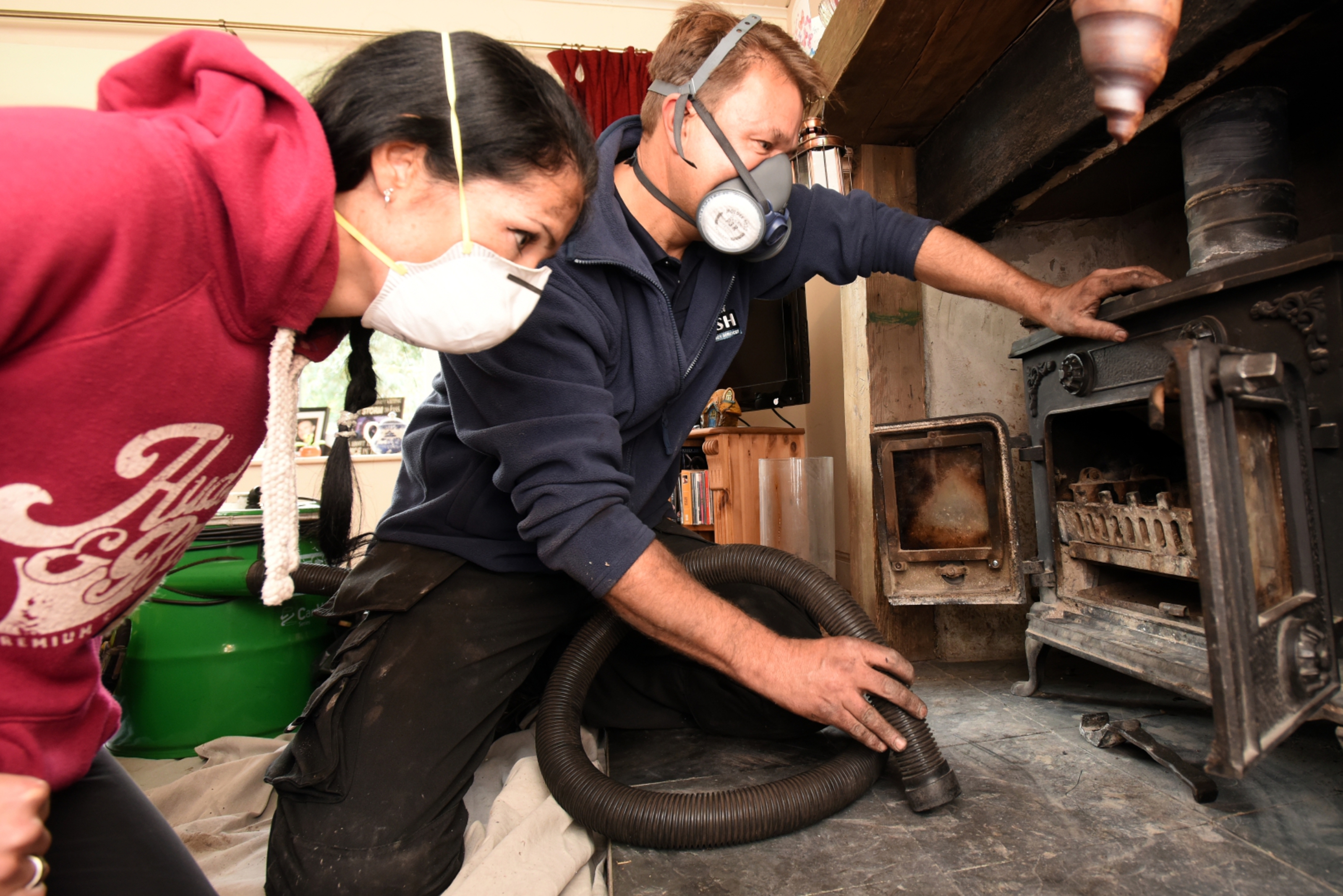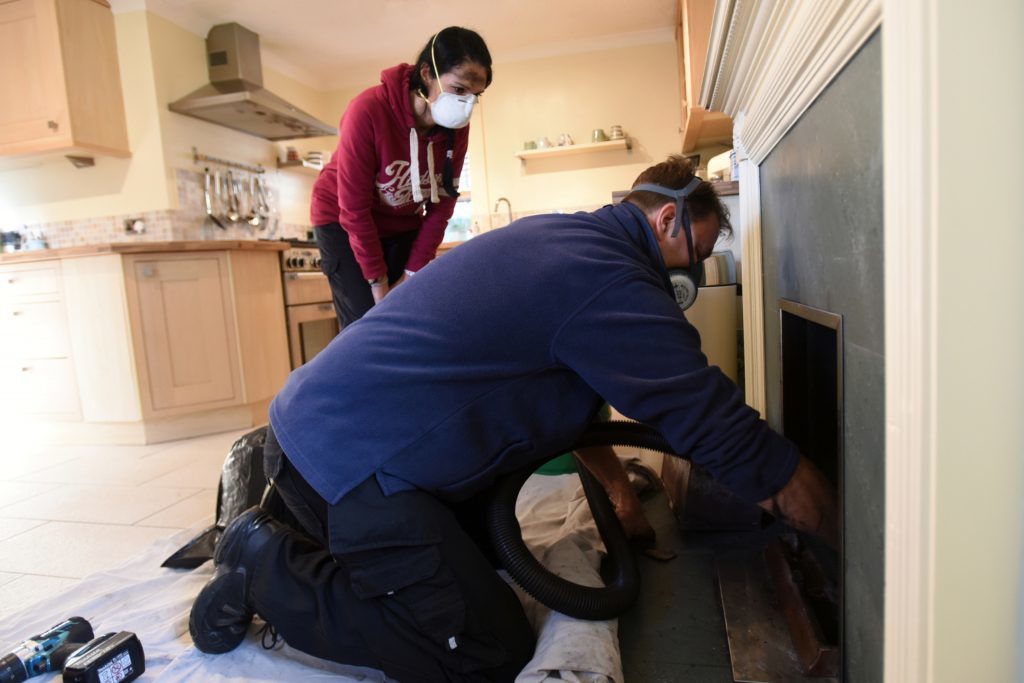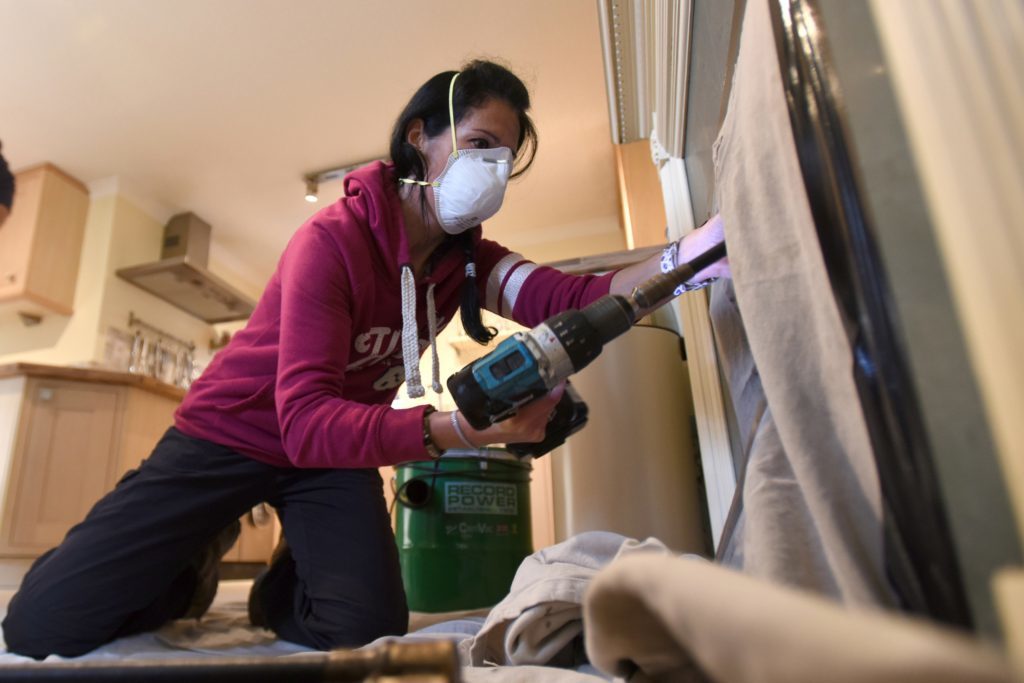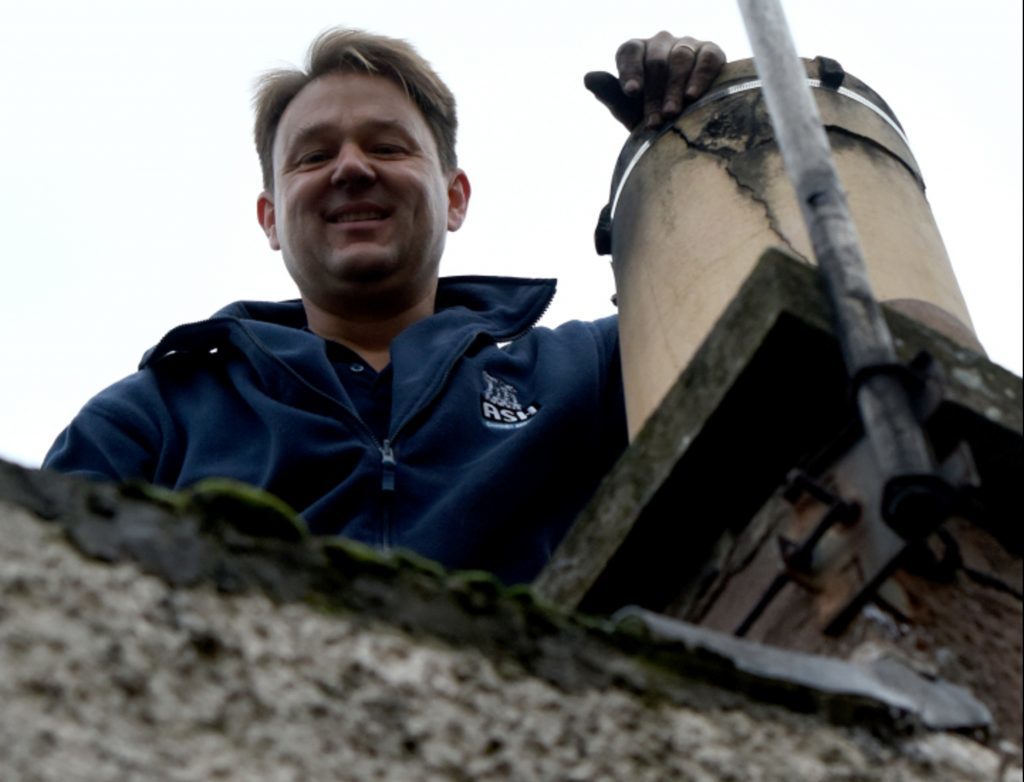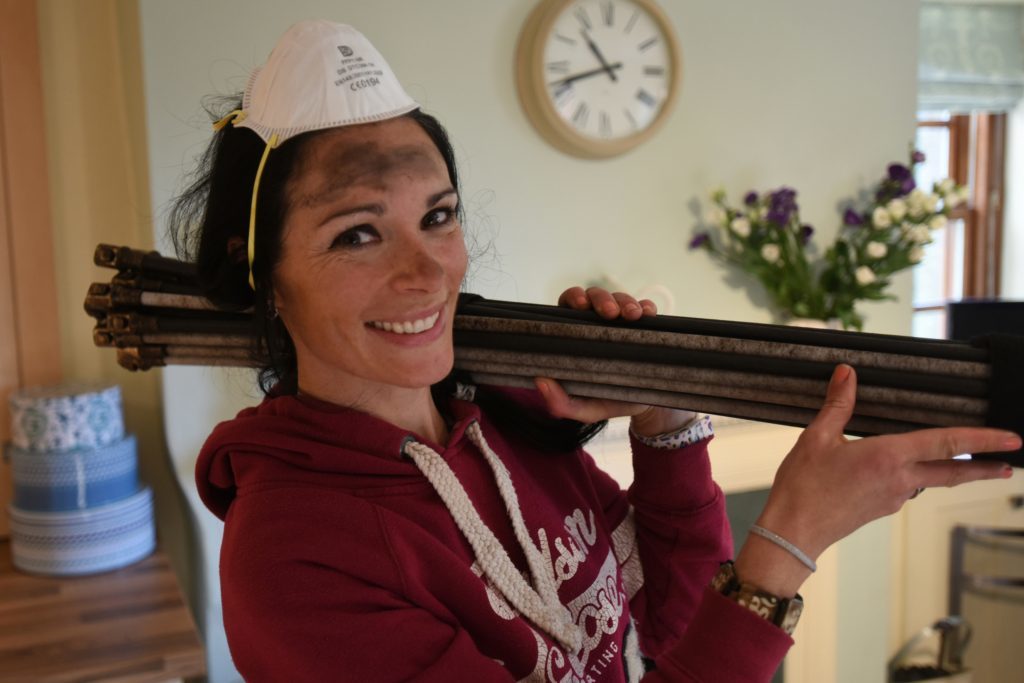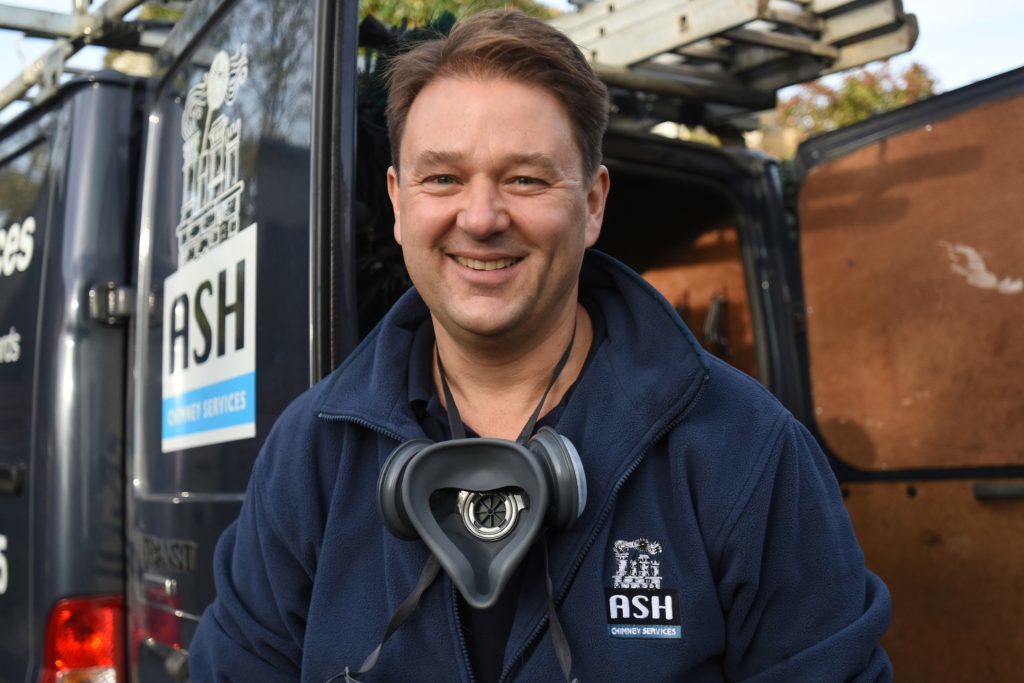The Dickensian image of a chimney sweep with blackened face and soot-ridden clobber was almost wiped out when central heating kicked in at the beginning of the 20th century. Now, thanks to the ever-increasing popularity of wood-burning stoves and open fires, business is booming, as Gayle Ritchie discovers
Simon Mappin is hunkered down on his knees while sporting a dusk mask and wielding a high-powered drill.
No, this isn’t some crazy scene from Breaking Bad – it’s chimney sweeping in the 21st century.
I’m spending a morning “helping” Simon, who runs Liff-based Ash Chimney Services, covering Dundee, Perth, Angus and Fife.
As the nights draw in, temperatures drop and more of us buy wood-burning stoves and open fires, Simon is finding himself inundated with work.
His job has seen him gain access to castles, schools, stately homes, and properties owned by some of the richest folk in the land.
“I’ve got a contract to sweep Crieff Hydro and I just finished a big job at Glenalmond College, which had around 60 chimneys,” says Simon.
“Many of the places I see are absolutely outstanding. There are homes of lords, ladies and baronesses and of everyday people.”
I meet up with Simon at a house in Dundee boasting an open-fire which apparently hasn’t been swept for a year.
Causing a mess is, for him, a big no-no, and I watch as he diligently puts down dust sheets, fixing some around the fireplace with duct tape.
Then he digs out a “flail” (a kind of spinning whip thing), which he attaches to a metal drain rod, and fixes this to a drill.
Then it’s a case of shoving the whole caboodle through a hole in the dust sheet and poking it up the chimney.
The higher Simon goes, the more rods he needs, as the flail whizzes around inside the chimney, sweeping out built-up soot, ash and tarry resins.
It’s tough, physical work, as I find out when Simon invites me to have a shot.
Within seconds, I’m sweating and the muscles in my arms are burning. A good workout indeed!
After around 30 minutes of power sweeping, we’re ready for the big reveal.
Loads of black soot and chunks of debris have fallen into the fire tray and Simon takes great joy in sucking it up with an industrial vacuum. It’s this debris – the tarry build up – which poses a fire hazard, resulting in a potentially deadly chimney fire.
“Wood which hasn’t been seasoned has more moisture and is therefore more difficult to burn,” explains Simon.
“And if woods burn slowly, there’s not sufficient heat, hence the tar will solidify into deposits which can be sparked. Plus a dirty chimney restricts airflow, so your stove won’t work so efficiently.”
For anyone poo-pooing the concept of chimney fires, just remember this – chimney fires can damage structures, destroy homes and can injure or even kill people.
At a house Simon is sweeping in Errol, the owners tell me they experienced a “terrifying” chimney fire first hand.
They heard a low, growling rumble and a bang and when they ran outside, they saw sparks and flames. Firefighters extinguished the blaze and luckily, there was no major damage.
Since then, the family have only used seasoned logs and bought a moisture meter to monitor how wet the wood is.
Simon is an expert on all things chimneys and fires, and while we’re out at a cottage near Forfar, he takes the time to replace a stove window, fix a baffle (reflective heat plate) that’s collapsed and inspect the chimney pot, which has cracked. He also fits a new cowl.
Having been sweeping chimneys for 16 years, Simon is full of anecdotes about birds and animals trapped in chimneys – he’s encountered everything from pigeons, starlings, seagulls and jackdaws to squirrels and owls, both dead and alive.
Then there’s the story of the 90-year-old farmer who used a hen as a chimney sweep for decades.
Until he called for Simon’s help last month, he’d regularly thrown a chicken down the lum and waited until it flapped its way to the bottom, its wings acting as a sweeping brush…
Certainly, being a sweep is a far cry from working for the foreign office in London, which is what Simon did before moving to Tayside with his wife, but he loves it.
“It’s a fascinating job and you get to meet lots of interesting people in all sorts of amazing places,” he says.
“I’ve never been busier, probably because stoves and open fires are very much in vogue these days.”
The vocation hit the headlines last month after an academically-gifted teenager in Fife – the best in her year-group at maths – was advised to consider pursuing a career as a chimney sweep by a Scottish Government online careers advice service.
For anyone who fancies chimney sweeping as a career, Simon advises signing up to an accredited course, and reckons it’s not a job to be sniffed, no matter how academic you are.
info
A chimney fire is both dangerous and frightening. A burning chimney reaches an incredibly high temperature and can not only cause significant damage to the inside of the chimney flue, but depending upon how the house was constructed can spread into other areas with catastrophic results.
In the event of a chimney fire, call the fire service immediately. Ultimately, regular chimney sweeping is the only way to reduce the risk of a chimney fire.
